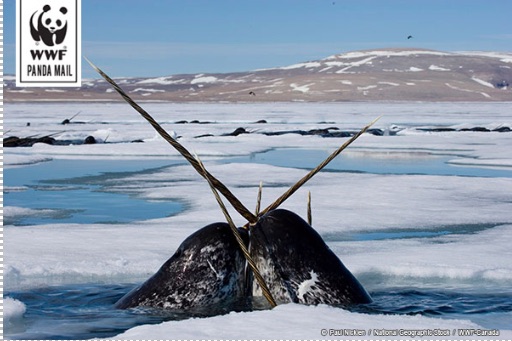. . SUSTAINABLE DEVELOPMENT . .
An article from World Wildlife Fund – Canada
After more than 30 years of negotiations, one of Canada’s most wildlife-rich Arctic areas will be protected, with an extended boundary that will make it the largest marine protected area in Canada, Parks Canada announced today [August 14]. The proposed area’s boundaries have between extended twice on the way to becoming a National Marine Conservation Area (NMCA), and the expansion of the protected area would not have been possible if Shell Canada had not voluntarily relinquished 30 permits after a lawsuit launched by WWF-Canada in 2016. The final boundary is informed by traditional knowledge, as recorded and put forward by the Qikiqtani Inuit Association (QIA), who worked for years to convey the importance of protected the integrity of the entire ecosystem.

(Article continued in the right side of the page)
If we can connect up the planet through Internet, can’t we agree to preserve the planet?
(Article continued from the left side of the page)
President and CEO of WWF-Canada, David Miller, said: “WWF-Canada has worked for decades to promote the protection and conservation of Lancaster Sound, which is home to polar bears, seals, sea birds, walrus, whales, and over 75 per cent of the world’s narwhal. The wildlife of this area, and the people who depend on them, will be better served by the larger boundary of the protected area, as it will better protect the integrity of the fragile Arctic ecosystem. We launched the lawsuit against Shell in 2016 to allow for an initial boundary extension. And today we’re celebrating the fact that the boundary has been further enlarged, informed by the recommendation of the QIA, to make it the largest marine protected area in Canada.”
About Lancaster Sound
● Known to Inuit as Tallurutiup Imanga, Lancaster Sound is the eastern entrance to the Northwest Passage.
● It is one of the most biologically diverse areas in the whole of the Arctic, and is home to polar bears, seals, sea birds, walrus, beluga and bowhead whales, and over 75 per cent of the world’s narwhal.
● The boundary for the NMCA was expanded after WWF-Canada launched a lawsuit in 2016, disputing the validity of 30 offshore exploration leases owned by Shell Canada. Shell relinquished the leases, allowing the boundary to almost double in size from Parks Canada’s original recommendation.
What is a national marine conservation area?
Under federal law, NMCAs provide protection from:
○ Energy exploration
○ Undersea mining
○ Ocean dumping
○ Overfishing
(Thank you to Janet Hudgins, the CPNN reporter for this article)